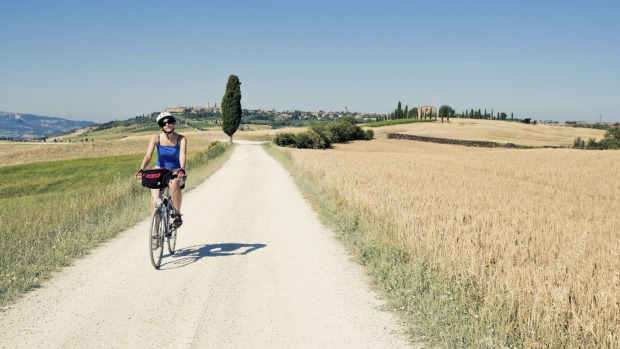
In Under the Tuscan Sun, the quiet, rolling hills of Tuscany help author Frances Mayes rejuvenate her life and repair a broken heart.
But fifteen minutes into a week-long biking tour of this famous Italian region, they are claiming scalps. More than half our group of 12 amateur bike riders are pounding the gravel, pushing their bikes up a vicious hill that takes us out of Chianciano Terme, the thermal springs town we will call home for the rest of the week.
Mayes may have explored these deceptively calm hills with a basket of fresh produce in one hand and a new outlook on life in the other, but under the wheels of a mountain bike, they may be the death of us.
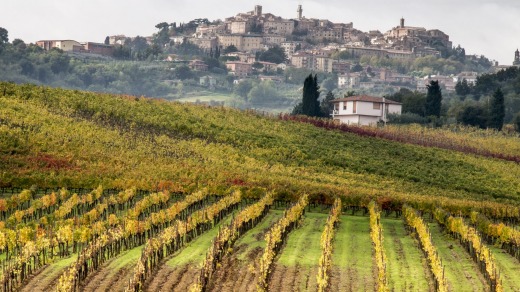
Exploring Tuscany on the seat of a bike is unique and satisfying way to do it although it is tougher than you may think. Towns dotted through valleys are actually hours apart when you're pedalling, the rolling hills depicted in postcards are actually relentless vertical monstrosities.
Even G Adventures, which runs well organised, well priced cycling tours that aren't just for Lycra-wearing fanatics, seem to have overlooked this fact.
In the first year they ran their week-long trips, it was given a three-out-of-five rating for difficulty and there was no support van. Now, it's rated four and there is a backup van for three out of four days of cycling but, at the end of an exhausting week, my backside and I are convinced it should be nudging five.
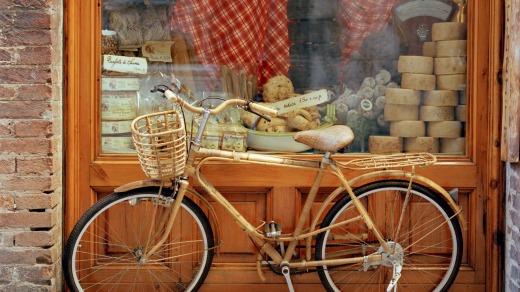
Backpedalling a little, nervous laughter abounds as our hotch-potch group gathers at Rome train station on a Sunday afternoon to take the 2½-hour train trip to Chianto and 20-minute drive to Chianciano. We span the ages and abilities – there are a pair of giggling grandmothers from the States, a Canadian man with a dodgy hip, a Russian banker in his 20s who only utters a couple of words a day, a lawless middle-aged German who performs wheelies on his bike, and a young mother who moonlights as a burlesque dancer. I suspect some of them haven't ridden a bike since childhood.
For the next four days, we will cycle from our farm stay in Chianciano out to a different town or destination and back.
It is an average of 40 kilometres each day and, with the frequent stops included, ends up being around three hours riding each way, with a couple of hours in the middle of the day to have lunch and explore whatever pocket of Tuscany we've found ourselves in.
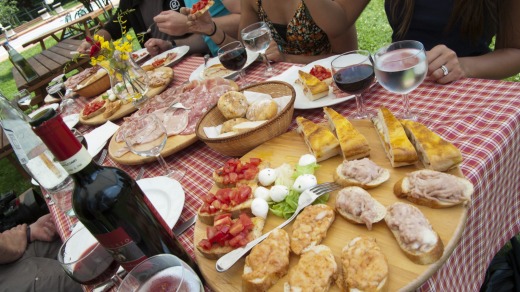
But our first night together at Agriturismo La Pietriccia tells us one thing: this trip is just as much about eating the food as it is about riding it off.
G Adventures hosts small cycling groups of eight to 12 at small, locally-owned agriturismos such as Stefano Mazzetti's property in the modern end of Chianciano, an ageing spa resort town that is eerily empty, even in May, as summer approaches.
The Italian government created the agriturismo scheme in the 1980s as a way of helping the ailing farming industry. Working farms are encouraged to double as accommodation and the concept has become so popular, many fakes abound, such as bed and breakfasts that aren't actually working farms any more and don't have the government's official certification.
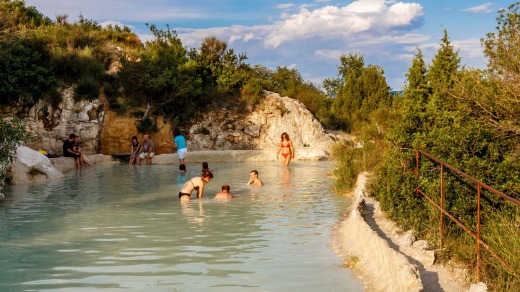
Stefano's, however, is as real as they come.
A modest, two-storey brick home of eight guest rooms is surrounded by a hectare of patchwork crops, grazing spaces, chicken coops, miniature horses, creeping vines and spectacular views across to the original medieval foundations of Chianciano.
It has been in the same family for eight generations, landing most recently to this bombastic, big-bellied, bearded chef who runs the farm, produces the food and mans the kitchen.
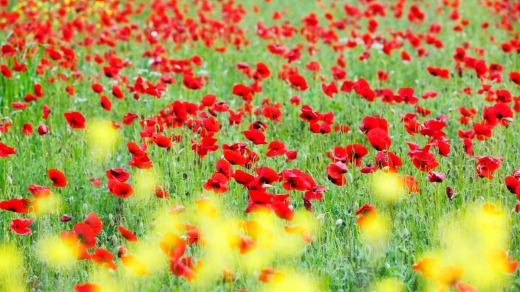
Stefano grows or rears almost everything we eat in our daily breakfast spread (eggs, fruit conserves, peaches, plums, warm croissants) and superb nightly four-course dinners.
He pickles his own vegies, presses his own olive oil, produces his own red wine, milks his own cows, grows his own fruit, churns his own butter, rolls his own pasta and cooks every meal we eat.
He is a slow food evangelist, a fiercely traditional producer and a tyrannical pedant when it comes to eating from the earth.
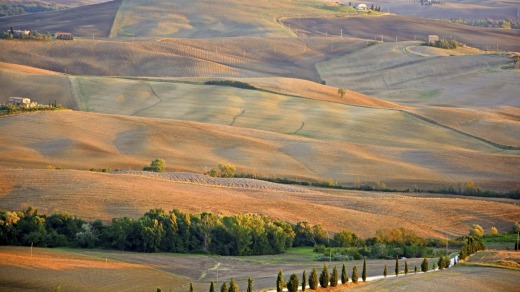
"From now on, you are not to buy pesto, it is illegal to buy pesto any more," he barks at us during a cooking demonstration one evening that includes a demo on blending our own express pesto using rocket, almonds, pecorino and a dash of good quality olive oil.
About half of what he produces at La Pietriccia is used for the guests and the occasional family of locals who visit the hotel for a special meal out.
The result is spectacular home-cooked Tuscan food that becomes as much a highlight of the trip as the cycling: homemade ravioli with fresh tomato, penne ragu with sunflower seeds, Cinta Senese pork with black truffle, millefeuille with lemon custard. And that was just the first night. Perhaps this is why so many of us are pushing our bikes up the hill the next morning.
Day one is a hard slog; a 60-kilometre round trip to the Renaissance town of Piensa that involves steep hills, unsealed roads, a mix of dust and sweat and some wild descents through swaying cyprus trees. The views are spectacular.
A convertible may offer the open breeze but there is nothing like chugging along the open road on two wheels, seeing the lizards running across in front of you, smelling the wood fire from Tuscan homes and counting the red poppies and wildflowers bobbing around in the spring sun.
Mario, our young, rascally guide, weaves us down roads that are often used in car commercials because of their beauty and through the Valle d'Orcia, a dramatic valley of rough, volcanic tears, carpeted in smooth green and yellow wheat crops. Surprisingly, Tuscany is still very rudimentary for bike riders.
When our group of giggling misfits is not wobbling onto the wrong side of a main road, we are awkwardly squeezed onto the gravel beside it, as buses and pelotons of Lycra-clad pros thunder past us in a dusty blur.
Mario is disarmingly laissez-faire, like a cheeky schoolboy who was somehow left in charge. Asked if there are any rules, he simply says, "No rules".
It's an ordered chaos that somehow gets us to Piensa in one piece.
Originally settled by the Etruscans, Piensa was deemed to be a fairly average settlement until the Pope, a native Piensen, visited his home town in 1400 and was shocked at its state of disrepair.
He ordered one of the best architects of the time, Bernardo Rossellino, to rebuild the town and the results are obvious. The cobblestone laneways are straight from a movie scene, with perfectly quaint names incorporating love, luck and kisses.
Each day follows a similar formula: Tuesday is a five-hour return ride to Montepulciano, a steep hill-top town of maze-like cobblestone paths, hidden caves, hefty local meats and more red wine.
On Wednesday, we leave the lawless main roads to ride through paddocks, private properties and even bushland to reach Lake Montepulciano, where we have local fish by the river before making the long journey home, exhausted again.
On Thursday, we ride to the sleepy hot springs town of Bagno Vignoni to eat tapas, swim in the thermal pools and, as seems to be the way, snooze in the sun. A marathon rise home ends with a monstrous five-kilometre hill that forces some of us to capitulate. Back-up van to the rescue.
The huge range of ages and abilities means our group stops almost every 20 minutes to allow everyone to catch up. It is a tad frustrating for the younger, fitter adventurers, but it means we experience each site, each arduous ascent and each thrilling descent together.
And despite the hard work, rewards are never far away.
In between long rides, we visit a Cinta farm to see how the famous local pigs are reared, make local, organic food with Stefano, visit Chianciano's thermal springs and, best of all, spend an afternoon tasting wine in local producer Agricola Fontanelle's Chianciano cellar.
As if riding six hours a day hadn't already bonded our group of misfits, copious amounts of vino rosso certainly does.
Gathered around a long table in an underground cellar stacked with thousands of bottles of wine and fermentation barrels, we tear through plates of Cinta Senese cured meats drizzled in olive oil and guzzle numerous glasses of wine – Rosso di Montepulciano, Chianti, Nobile di Montepulciano, Stiglianese – under the guidance of Valerio Rosati, one of the three brothers who now run this family-owned business.
It is a week of excessive indulgence – you'd expect no less in Tuscany – but it comes with a huge sense of accomplishment as we hang up our helmets and leave La Pietriccia.
We've seen parts of Tuscany many people never will, ridden the roads hardly travelled and earned every glass of wine and spectacular view through sweat and sore backsides. And the pecorino has not gone straight to our thighs.
I suppose we can thank those rolling hills.
www.gadventures.com.au
Several major international airlines fly frequently from Sydney and Melbourne to Rome; see qantas.com.au or singaporeair.com.
G Adventures runs six-night Cycling Tuscany tours between April and October from $1249, with one night's accommodation in Rome then five nights at an agriturismo in Tuscany. The tour includes four days of cycling, book-ended by two days in transit with optional time in Rome. Six breakfasts, five dinners, a cooking class, a wine tasting, bikes, biking equipment, guides and a support vehicles are also included.
This traditional breed of pig is reared in the wild or semi-wild and is endemic to Tuscany.
It makes for high quality, strong-tasting, strong-smelling cured meats including prosciutto, guanciale, capocollo and – prepare the treadmill – extremely good lard.
Pack it onto a crusty roll for a quick lunch while bike riding or have a few slices with a glass of red in the arvo.
It's the local name for Pecorino di Piensa, a hard cheese made with the whole, raw milk of sarda breed sheep that are endemic to this area. The cheese has a soft, subtly spicy flavour and is used in everything from pasta dishes to pre-dinner nibbles.
Wine snobs may pillory the notoriously cheap and nasty Tuscan wine but there are plenty of producers in the Chianti area making spectacularly good (and still cheap) bottles of their own dry red. Look for something with the black rooster seal (the gallo nero in Italian) to indicate that the producer is a member of the Chianti Classico Consortium, a local association of producers.